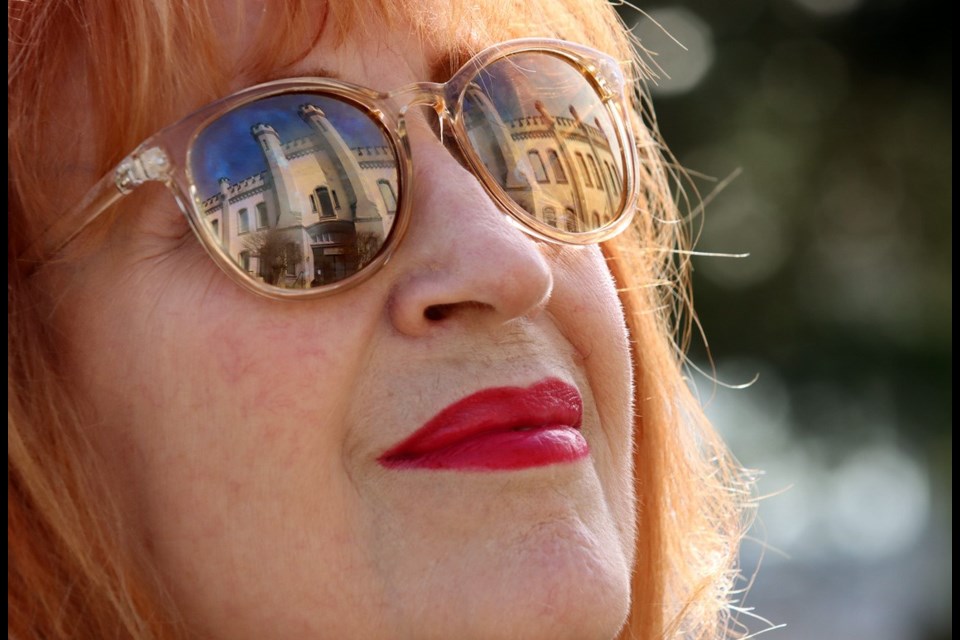In June 1975, Margaret Franz got a call from a former roommate that would change her life.
Then, Franz was an elementary school teacher in Toronto, having left the Kootenay farm she grew up on with her immigrant parents and sister, Mary Steinhauser.
Steinhauser, a psychiatric nurse who trained at Coquitlam’s Riverview Hospital, was one of 15 people taken hostage by three inmates at the BC Penitentiary in New Westminster, and her life was in danger, the roommate told her.
Without any quick access to news, Franz waited by the phone for word about her sister’s safety, taking the next day off work to hear the radio coverage and read the newspapers. “I was shocked out of my mind,” Franz recalled.
By early Wednesday — 41 hours after Mary was detained — an administrator at BC Pen called Franz to say that Steinhauser had died. And could she please inform her parents, who were now living in Sechelt.
“I just couldn’t,” Franz remembered. “I couldn’t tell my mom that her daughter was dead. I could hardly deal with it. I never thought Mary wouldn’t come out alive.”
The story about Steinhauser’s life and the circumstances around her death are the subject of Franz’s new book Between Blade & Bullet, a publication by Friesen Press that’s due to come out next month via Amazon.
A Port Coquitlam resident for 45 years, Franz said she wanted to finish the book that she started in 1976 following the inquest and inquiry — neither of which revealed the reason for her sister’s death — to honour Steinhauser’s legacy.
“It’s been on my mind all this time,” Franz told the Tri-City News. “After the inquiry, I thought there were a lot of questions that went unanswered. There was a lot of uncertainty and secrecy about why she was killed, and why she was the only one that didn’t walk out of that vault alive.”
Franz began to put the pieces together after her retirement in 2016. She interviewed a number of Steinhauser’s personal and professional contacts and pored over media stories from June 9, 1975, to Aug. 30, 1976, when her name was prominent in the news cycle.
Three years ago, Franz landed the inquest transcripts from the BC Coroners Service. At the time, the inquest was the longest in B.C. history, running from May to July 1976, and resulted in 16 booklets with about 300 pages each.
“I sat through the whole inquest,” she said. “It was ruled an accidental death and there was no crime attached to it. No charges laid.”
EARLY DAYS
Bravery is a common theme in Franz’s book.
Even as a child, Steinhauser stood out for speaking up for the vulnerable and marginalized. After her training as a psychiatric nurse at Coquitlam’s Riverview Hospital, she moved to Toronto to work at the Queen Street Mental Health Centre — the first permanent mental health facility for Upper Canada, when it opened in 1850 — before returning to B.C. about two years later to start a job at the Tranquille Sanatorium in Kamloops.
But after two years, and wanting more education and experience, she moved to the Lower Mainland to work as a nurse/counsellor at the new hospital at Matsqui Institution, a federal medium-security prison in Abbotsford. Soon after she obtained her master’s degree in social work from UBC, she was hired as an institutional classification officer (CO) at BC Pen, a federal penitentiary with a reputation for violence.
By then, Steinhauser was 30. “She did a lot in her life,” Franz said. “She was very determined, very ambitious. She wanted to succeed in her field.”
At BC Pen, Steinhauser was empathic toward the inmates and criticized the system for condoning harsh punishments such as solitary confinement, which was particularly brutal at the Royal City institution. And when convicted murderer Andy Bruce, who was on a good terms with Steinhauser, got wind that he was going to be sent to “The Hole,” he rallied two other inmates in an attempt to escape.
At around 8 a.m. on June 9, 1975, Bruce took hostage Steinhauser and 14 other COs, using Steinhauser as a human shield when the armed tactical squad stormed the area. Bruce put a knife to her throat whenever an intermediary approached the vault they were held in. “It was a terrible thing to put her through that,” Franz said.
By June 11 at 1 a.m., Steinhauser was dead — shot through the shoulder and then the heart, by a prison officer — while Bruce was shot twice; he survived.
RECOGNITION
Her calm mannerism during hostage-taking and her heroism were recognized by then prime minister Pierre Elliott Trudeau, whose condolence telegram to her parents, August and Johanna Steinhauser, from June 11, 1975, is printed in Franz’s book.
Franz said she also wanted to single out two of the hostages that testified at the inquest as well as the intermediary, all of whom had different memories about the attack; however, she also wanted to highlight Bruce’s words from the inquest about the “cruel and unusual” inmate experience at BC Pen.
Solitary confinement “is still being used today even as we raise concerns about mental health,” she said.
Franz said she hopes the book will renew calls for prison reform, and shed light on a topic that hasn’t had much media interest in four decades. “It was a huge story back then, and I’ve been the only person who has written a book about it. I want to honour my sister’s strength and her sacrifice. Strong women are something to be celebrated.”




